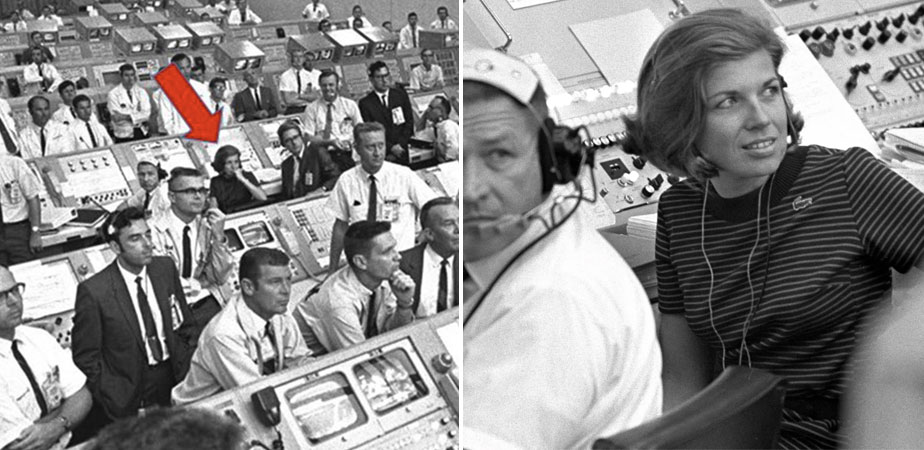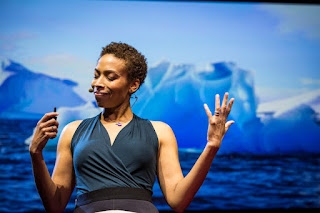By Sethanne Howard
 |
IERS - https://ggos.org/item/iers/
|
Meri Sue Carter is a Research Astronomer at the US Naval Observatory (USNO) in Flagstaff, Arizona. She was the Director of the World Data Center for the Rotation of the Earth, which coordinated data for the International Earth Rotation and Reference Systems (IERS) Service.
NB: The World Data Centres (WDC) were reformed and a new ICSU World Data System (WDS) was established in 2009. Although there are no longer individual Directors of the WDC, Meri Sue and the Earth Orientation Department at USNO still maintain historical Earth Orientation data and serve that data to users all over the world.
Astronomers not only observe planetary, celestial, and galactic objects, but they also monitor Earth’s rotation throughout time. Meri Sue Carter’s background and career trajectory made her well-poised to take on the task of keeping tabs on Earth’s rotation.
Early Life
Meri Sue Carter grew up in a household oriented around science, technology, engineering, and mathematics (STEM). Both parents were life-long learners - her mother was in school and her father a geodesist - and scientists from around the world joined the family at the dinner table. All eagerly discussed their work with Meri Sue, so going to college was a given, and a career in astronomy a valid goal.
Growing up with a set of sisters, the family did not see girls’ jobs and boys’ jobs, they saw ‘jobs’ doable by anyone. For example, her father built the lunar laser ranging system in Hawai’i, so there were often nights when Meri Sue watched and learned about the night sky while her father collected data to measure movement of the Earth's tectonic plates, the length of day, and the Earth's polar motion (LURE). Shooting a laser was just something everyone did, she thought, and as a young child, Meri Sue played with laser pointers.
At the University of Maryland, Meri Sue earned a bachelor’s degree then applied for jobs in the DC area. It was while attending a public tour at the US Naval Observatory (USNO) to see Halley’s Comet in 1986 when she learned about some job openings there and took a one-year temporary position. During her time, she was told the USNO would pay for graduate school if she spent five years there, and after seven years at USNO, she attended university part time so that she could spend time with her growing family. Thirteen years later, she finished her Master’s degree, earning and maintaining computer certification, while also trained to use the Very Long Baseline Interferometer (VLBI) and global positioning system (GPS) data to produce images of radio sources. In 1996, Meri Sue moved to the USNO in Flagstaff to become the Director of the World Data Center A for the Rotation of the Earth.
 |
| Meri Sue Carter |
Position
Meri Sue is responsible for coordinating data for the International Earth Rotation and Reference Systems (IERS) Service, the body responsible for maintaining global time and reference frame standards, notably through its Earth Orientation Parameter and International Celestial Reference System groups. The sub-bureau for Rapid Service and Predictions of Earth Orientation Parameters of the IERS, located at the USNO, monitors the Earth's rotation (hence Meri Sue). Part of its mission involves determining a time scale based on the current rate of the rotation of the Earth. Other services of IERS are done at the Paris Observatory.
A typical day for Meri Sue at the USNO begins at 8 AM local time, starting with checking email to see if anything needs quick attention, e.g., something sent from DC several hours earlier. There are usually one or two meetings every day that might include a scientific talk.
The daily report (i.e., “bulletin”) on the Earth’s rotation is due at 10 AM every day. Data for the report originate from the world-wide network of dedicated telescopes that observe the current rotation of the Earth. The observations are sent to USNO where Meri Sue uses the observations to produce the daily and weekly products which are then distributed around the world. Although automatic to produce, the products need cross-checking before distributing. Meri Sue reports, “I attend meetings at the Flagstaff station to make sure we will not be impacted by issues such as power outages, or network changes.”
The data (on time and rotation) included in the daily and weekly products are critical for navigation, certainly for the Navy (and all branches of the military) but also for anybody interested in navigation, pointing (as in pointing a space telescope), real-time orbit determination (as in planetary missions), ephemerides (to establish the orbit for a planetary mission), and leap second determinations. The most accurate predictions are needed for real time Earth satellite orbit determination and VLBI analysis. These predictions define the IERS Reference Meridian, the International Terrestrial Reference System, and subsequent International Terrestrial Reference Frames. Related coordinate systems are used by satellite navigation systems like GPS and Galileo.
Meri Sue also produces the observing schedules for the world wide network of IERS telescopes. She produces and distributes those schedules to the network of telescopes and then checks daily to see the status of each station. She looks for problems that might impact the data. Examples include: Did they miss the scheduled observation? What was the issue? Is it resolved for tomorrow? Do new schedules need to be made to remove the issue or include it in a better way? She works with USNO staff members in DC on software upgrades or fixes to USNO code or fixes to the data files or distribution methods.
Like many astronomers she engages in public outreach. She, like the rest of us, gives public lectures, runs visitor nights at telescopes, answers questions from the general public, gives tours, and engages in public events such as Science in the Park.
Meri Sue reports that she is very satisfied with her job. Even with the daily and weekly deadlines, she has the freedom to schedule much of her time. The job is always changing, and true to her parents’ lifestyle and her own upbringing, she embraces the need to be a life-long learner willing to adapt to new technology, including that which enables her to work from home or other locations. All of this makes the job enjoyable, she reports. Importantly, there is time to write scientific papers or use the USNO telescopes for projects.
Her work-life balance is stable, though she admits that “twenty years ago, the USNO was not particularly family friendly”. Without cell phones and a robust Internet, child care could interfere with career advancement. Today, with modern technology, USNO is more family friendly. Meri Sue can often work at home or other places.
Genealogy
Meri Sue’s father introduced her to the night sky and fostered her love of astronomy. As a geodesist, he worked on projects around the world and when they both questioned an article about the Chandler Wobble in Eos, they began writing a response together. The Chandler wobble, or Chandler variation of latitude, is a small deviation in the Earth's axis of rotation relative to the solid Earth, which was discovered by and named after American astronomer Seth Carlo Chandler in 1891. The Carters’ response grew longer and eventually turned into a book, Latitude, a history of the breakthrough discovery of the explanation for the Chandler Wobble. It makes a nice companion to Longitude by Daval Sobel. During her background research on the Chandler Wobble, Meri Sue compiled information about Simon Newcomb (1835 - 1909), an astronomer at USNO who established the US as a major player in world astronomy. Being in DC at the time she had access to the Library of Congress and the USNO Library. I expect there is another book in the making.
There is a third generation of scientists in the family. One of her sons showed early aptitude for mechanical engineering, and as a high school intern at USNO, he conducted studies of astronomical seeing in the Flagstaff area to determine the best site for a new telescope - after making the mount for the seeing instrument! A very creative young mind, indeed. USNO will build its newest telescope (TBD) at the site he chose. Her daughter has applied to vet school - not astronomy but still science.
So there are three generations of the Carter family working in astronomy or related subjects.
Advice
“Be flexible and have a good support system. My family supports me and knows that sometimes I really do need to work “right now” and so maybe they have to wait an hour longer than they want to head out for a family hike. But they also know that there are days that we are completely free. My parents have always supported me by coming to my home every year to cook Thanksgiving dinner…. I always work on Thanksgiving and it was very hard to manage my kids and the food and the workload on that day. So, it became a tradition that my parents come to my home and take care of that day. I would work Thanksgiving and my co-worker (with no kids) would always work Christmas. It really does take a village!”
Final Thoughts
Meri Sue’s academic and career paths are not typical, and that’s okay. “Completing a degree is not the end of the path”, she said. In your career, “you need to stay up to date, so the study skills and time management skills from college have helped with that.”







